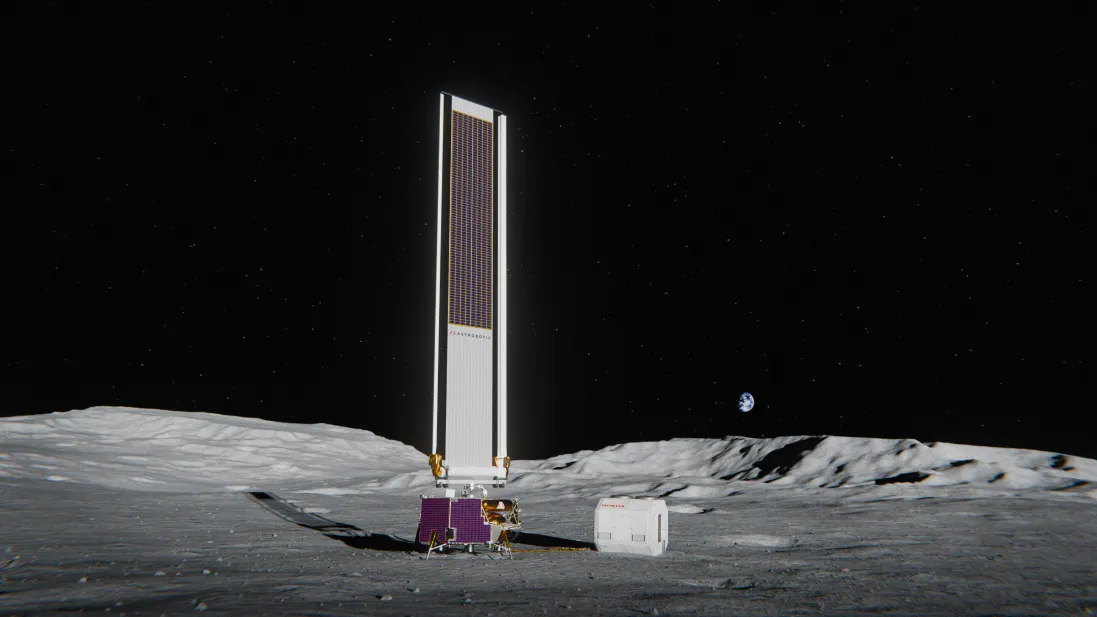Honda and lunar startup Astrobotic have announced a partnership to explore how a regenerative fuel cell (RFC) system could sustain power on the Moon, particularly during its long, frigid nights.
The collaboration will assess how Honda’s RFC can be integrated into Astrobotic’s LunaGrid, a scalable power service based on solar arrays. Both companies plan to conduct illumination studies at prospective landing sites near the lunar south pole, evaluating system scalability, as well as hardware and software integration.
A major challenge for lunar missions is the two-week-long lunar night, when temperatures can plunge to -424°F and solar panels stop generating power. Honda’s RFC addresses this by storing solar energy as hydrogen during the lunar day, then converting it back to electricity at night, producing only water as a byproduct. That water is recycled through high-pressure electrolysis, creating a closed-loop energy cycle.
Astrobotic’s Vertical Solar Array Technology (VSAT), designed to track the sun for optimal capture, will supply the hydrogen system with solar power. The standard VSAT is expected to generate up to 10 kilowatts, with an XL version planned to produce five times more.
Together, the technologies aim to provide continuous, reliable lunar power, a critical step toward enabling sustained exploration.
For Honda, this marks its first public space-focused agreement, extending its long-standing fuel cell research into extraterrestrial applications. For Astrobotic, it’s another milestone in its mission to build a lunar economy, following its Peregrine lunar lander project earlier this year.
Related: Blue Origin Secures $190M NASA Deal to Deliver VIPER Rover to the Moon
The project also aligns with Japan’s broader space ambitions under the Artemis Accords, which include future lunar exploration and eventual human settlement. With the lunar south pole identified as a key target for its sunlight exposure and potential water ice deposits, power systems like LunaGrid paired with Honda’s RFC could pave the way for more ambitious missions under NASA’s Artemis program.






